If there’s one thing Ladakh has in abundance, it’s beautiful monasteries. From improbable clifftop locations and colourful festivals to towering Maitreya Buddhas and stunning medieval frescoes, there’s plenty to discover. Check out our guide to some of the region’s best.
Thiksey Gompa
This beautiful monastery is an architectural masterpiece and while it is not as well known as perenially popular Hemis Gompa, it is arguably all the more attractive for it. Upon arrival, your first stop should be Thiksey’s museum; look out for the trumpet made from a human thigh bone, the sound of which is supposed to drive away evil forces; portable altars; bows, swords and shields seized from Muslim invaders; and some fearsome ritual dance costumes.
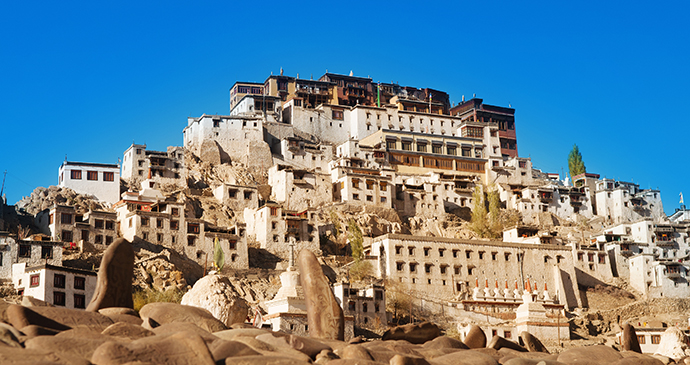
From the museum you should continue up the steps to the gompa’s main courtyard, around which the most important temples are located. A particular highlight to look out for is the Temple of the Maitreya Buddha, the icon of Thiksey and one of the finest Maitreya Buddha statues in Ladakh.
Basgo Gompa
This monastery was founded in 1515 but much of what you see dates from a century later. Perched on top of a rocky crag above a jade-green oasis, this crow’s nest of a gompa seems to be pushing organically up out of the ground.
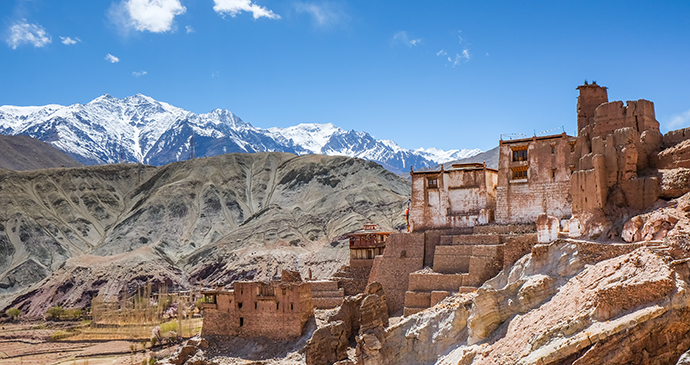
In fact, sadly, the movement is the other way round: ‘it is melting’. With every passing year the elements take their toll, the rains dissolving the baked mud bricks, until one day in the not so distant future the gompa and surrounding buildings will return to the earth whence they came.
Hemis Gompa
Hemis is famed for its spectacular Tsechu Festival. Held over two days starting from the tenth day of the fifth lunar month (normally around June), the festival celebrates the birth of Guru Padmasambhava (Guru Rinpoche) and features two days of masked dances depicting how Padmasambhava and his eight manifestations defeated the enemies of Buddhism.
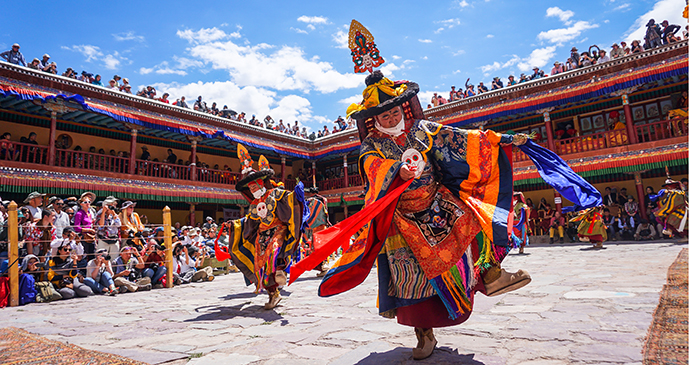
Every 12 years, a huge thangka (a Tibetan Buddhist painting on cotton or silk) depicting Padmasambhava is unveiled during the festival. The next unveiling is due to occur in 2028.
Stakna Gompa
Perched like a crow’s nest atop a hill by a bend in the Indus River, Stakna has one of the most photogenic locations of any monastery in Ladakh. The shape of the hill is said to resemble a tiger’s nose, from where the gompa takes its name. Founded in the 1500s by a Bhutanese monk and scholar, Chosje Jamyang Palkar, Stakna Gompa is home to 30 or so monks who follow the Drugpa, or Red Hat, school of Buddhism, which originated in Bhutan.
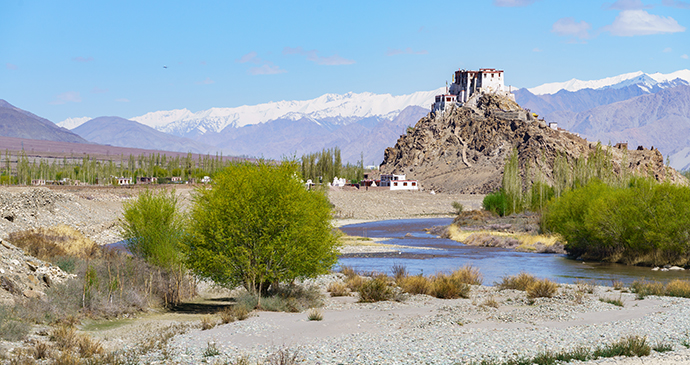
Don’t be fooled by the plain exterior of the gompa, as this belies what you’ll find inside: bright and exquisitely painted murals. The centrepiece of the gompa is the 16th-century prayer hall, where paintings have been sensitively restored and the colours are vibrant.
Diskit Gompa
The Diskit Gompa clings to the rugged cliffside and has somehow defied gravity for centuries. Built originally as a royal palace in the 15th century, the buildings were heavily guarded with huge watchtowers and two heavy wooden gateways, one of which survives. Close to the location of the lower gate (now removed) is a chessboard etched into the stone: this is how the guards would entertain themselves in their downtime.
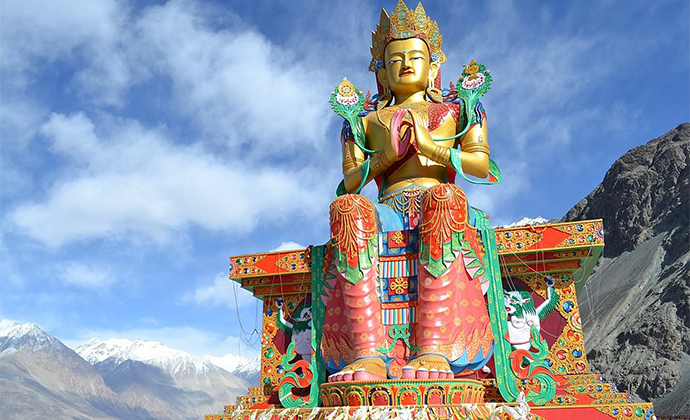
It is also worth heading down towards the river to see Diskit’s New Gompa. The gompa itself is of little architectural or historical interest, but there are two things here worth seeking out. The first is the photang of the 14th Dalai Lama, which houses an exhibition of antique thangka paintings. The second is almost unmissable, standing at some 30m tall and painted in gold and garish colours: the vast Maitreya Buddha (also known as the Gyalwa Chamba), which not only tops the site but also dominates the surrounding landscape, clearly visible from both directions along the valley.
Alchi Chhoskhor
Alchi is famous for its beautifully carved and painted shrines, which date back to at least the 12th century and are remarkable for both their age and state of preservation. Alchi’s position, tucked back from the historic caravan route that winds through Ladakh, has been its saving grace.
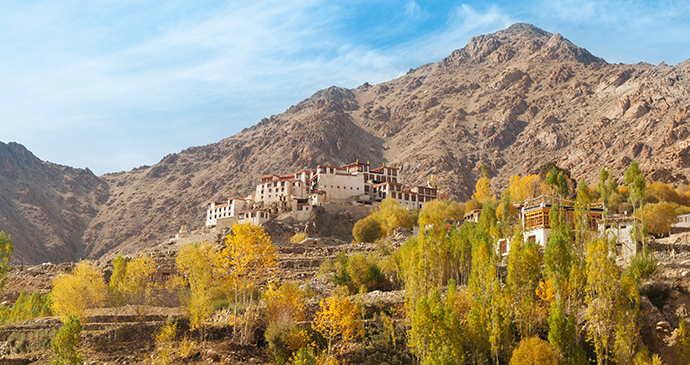
After the monastery was founded in the 11th century it was a relatively wealthy place (as attested to by the superb murals) but attracted little attention from outside. This is probably why, when the Dogra invasion came in the 1830s, many of Ladakh’s monasteries were sacked but Alchi passed beneath their radar, and consequently the frescoes survived.
Want find out more about Ladakh’s travel highlights? Check out our comprehensive guide:
